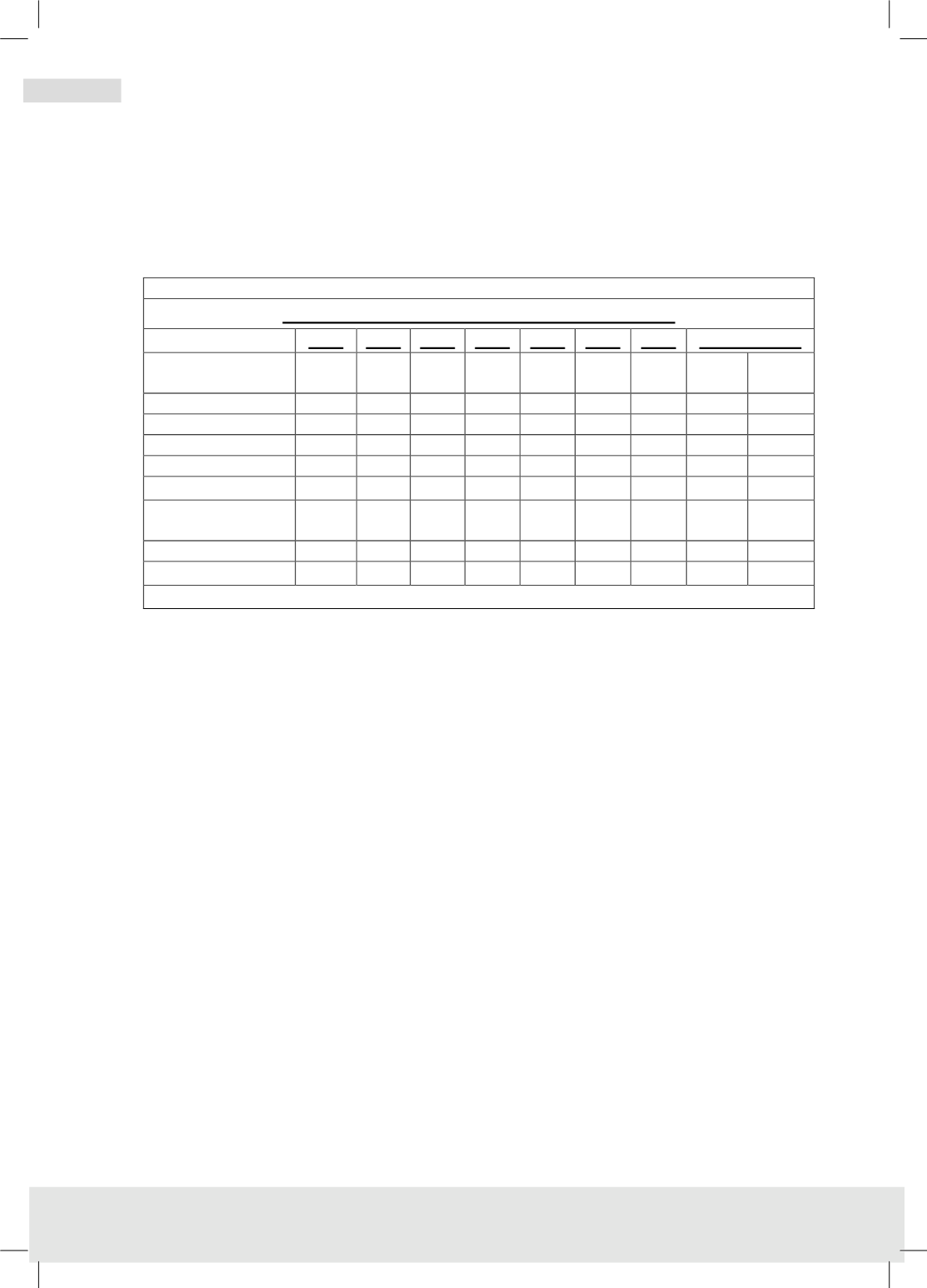

مجلة النفط والتعاون العربي
161
العدد
- 2017
أربعون
المجلد الثالث و ال
2016
أوابك العلمية لعام
�
ص لبحوث العلمية الفائزة بجائزة
�
عدد خا
76
66
This is collated from the various forecasts of the Freedonia Inc.
72, 73, 74
, the US
consultants on lubricants.
Table (12)
Lubricants Demand 2002 - 2019 - Million tons a year
2002 2007 2009 2012 2014 2017 2019 Growth % / y
Region
2002-
2019
2014-
2019
Asia-Pacific
9.9
13.3 13.5 15.7 16.5 19.0 19.5 4.000 3.400
North America
10.7
10.0
8.8
10.3
9.9
9.6
10.1 -0.003 0.004
Western Europe
5.4
5.3
5.0
5.1
4.9
4.6
4.9 -0.005 0.000
Eastern Europe
2.9
3.4
3.5
3.6
3.8
4.0
4.1
2.000 1.500
Africa/Middle East
2.9
3.4
3.3
3.6
3.8
4.1
4.3
2.300 2.500
Central & South
America
1.8
2.1
2.0
2.3
2.3
2.7
2.6
2.200 2.500
Total World
33.7
37.5 36.1 40.5 41.1 43.9 45.4 1.700 2.000
Source: 72, 73 & 74 Freedonia Group Inc. Slight modifications and growth rates by author.
It is clear that the growth in the world lubricants demand is modest at 1.7% a year
for the whole period and 2% a year for the forecast period from 2014. The growth
in North America and Western Europe is very slight if any as these regions are
mature, consuming higher grades of lubricants
73,74
and perhaps exercising much
better conservation and drain periods where consumers also seek to reduce
handling and disposal costs
72
.
The highest growth rates are in Asia - pacific of 4% a year for the whole period
and 3.4% a year for the forecast period with expanding numbers of motor vehicles
and continued industrialization
72
. The growth in the remaining regions is above
the world average and below that of Asia
–
Pacific. These developing regions of
Central and South America, Africa and the Middle East are expected to exhibit
gains due to economic growth, greater manufacturing output and increased motor
vehicle ownerships
72
. Fig (21) shows the trend clearly.
However, the above forecasts are believed to be optimistic by others in the
business. Kline & Co believe that lubricants demand to be 39 and 42 million tons
a year in 2014 and 2019 respectively
72
. This is about 2 to 2.5 million tons a year
difference.
Reports by Fuchs Petrolub
89
in Feb 2016 gives demand for lubricants
–
excluding
marine oils - at 36.0 and 35.6 million tons a day in 2007 and 2014, which are
















